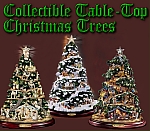| Written by Paul D. Race for Family Christmas OnlineTM |
Can You Worship the Lord on a Flutophone?Congregational worship always includes singing—even if you can’t sing, you can “make a joyful noise unto the Lord.” But Psalm 150 also tells us to praise God with most or all of the musical instruments available to the ancient Hebrews: trumpets, harps, pipes, cymbals, and timbrels. But who can afford harp lessons today, and where can you even find a lyre or psaltery (depending on your translation)? Do those verses even relate to the musical instruments you can find in Kinkaid’s music store today? Well, yes, more than you might think. In fact, the major classes of musical instruments we use today (not counting synthesizers) all descended from the instruments mentioned in Psalm 150: brass, woodwinds, strings, and percussion.
Percussion (Timbrels/tambourines, Cymbals)—Only two kinds of percussion are named in Psalm 150, the timbrel (a Even if I accidentally left out your favorite musical instrument, you should have no trouble figuring out how it relates to the brass, woodwind, string, or percussion families listed in Psalm 150. What’s in Your Closet? By now, you might be remembering the last time you got your old clarinet out of the case and wondering if you can really feel the same sense of worship when you’re playing as you do when you’re singing? Many musicians claim that you can, if you are really comfortable with your instrument and with the music. So what about our opening question, can you worship God on a flutophone (or on any other relic of your school days that is still gathering dust in your attic or closet)? Yes you can, or at least you can try. And you’ll be obeying scripture, even if all you produce is a joyful noise.
To return to the Christmas Musings page, click here. To return to the Family Christmas OnlineTM Home Page, click here. For more articles about music in general, visit the SchoolOfTheRock.com's "Things to Think About" page. Articles include: For a growing list of articles about playing music and learning instruments, visit the SchoolOfTheRock.com's "Online Music Classes" page. |
Note: Family Christmas OnlineTM is a trademark of Breakthrough Communications(tm) (www.btcomm.com). All information, data, text, and illustrations on this web site are
Copyright (c) 2006, 2007, 2008 by Paul D. Race.
Reuse or republication without prior written permission is specifically
forbidden.
Family Christmas Online(tm) is a participant in the Amazon Services LLC Associates Program, an affiliate advertising program designed to provide a means for sites to earn advertising fees by advertising and linking to amazon.com.
For more information, please contact us

| 
| 
| 
| 
|